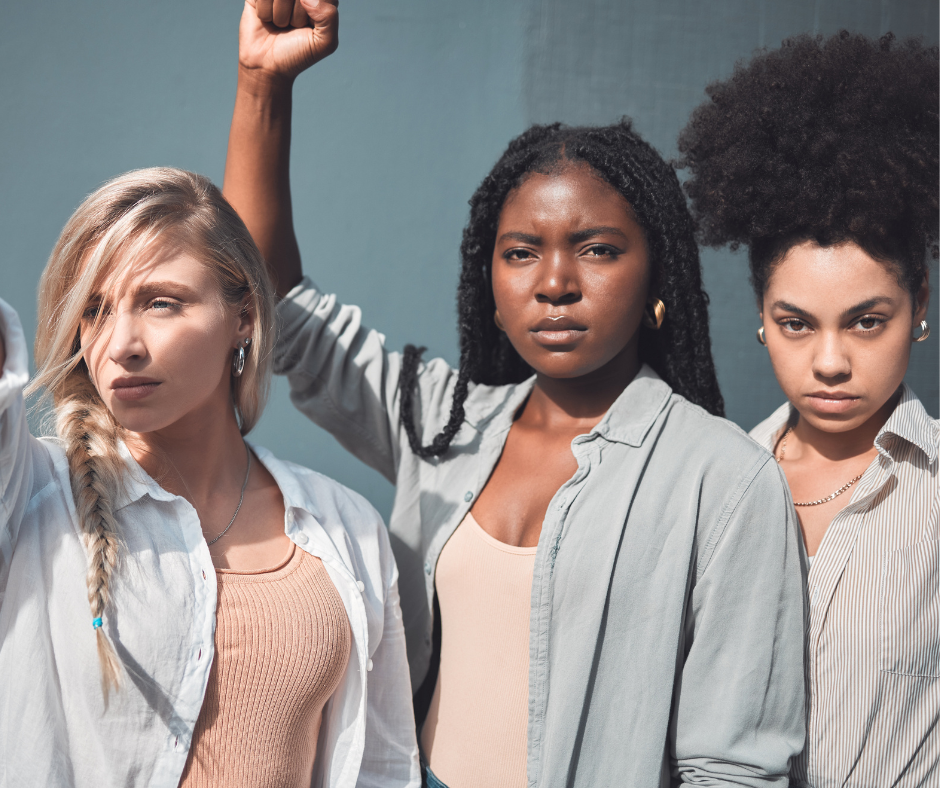

Female Street Artists: Voices and Visions from the Urban Fabric
Summary
Reflection Questions
Journal Prompt
If you were asked to name the most famous street artist alive today, Banksy, Shepard Fairey, and Retna would all come to mind. Exit Through the Gift Shop is an absolute icon. But there are so many influential female graffiti artists making social change and disrupting the scene by painting in public places. Notable examples include Olek, Bambi, and Shamsia Hassani—among many others. In this article, we explore the work of female street artists who are making an impact in a traditionally male-dominated field. These women challenge the confines of traditional street art through their installations and interpretations. Read on to learn more about their art, activism, and advocacy.
Female Graffiti Artists Transforming the Street Art Scene
Olek (Agata Oleksiak)
Olek, whose real name is Agata Oleksiak, is a Polish-born artist based in New York City, renowned for her work with crocheted yarn. Olek’s art transcends the traditional boundaries of crochet, transforming it into a vibrant, eye-catching form of urban installation and performance art. Her work often encompasses a variety of objects and environments, from bicycles and sculptures to entire rooms and outdoor spaces, enveloping them in colorful, intricately patterned crochet. This act of covering everyday objects and spaces with crochet seeks to alter the viewer’s perception of familiar objects and the environment, infusing them with new life and meaning.
Olek’s artworks frequently address broader themes such as femininity, sexuality, and the complexity of relationships, while also commenting on social and political issues. Her use of crochet is both a nod to the traditionally female domestic craft and a subversive take on the use of public space. Through her bold, guerrilla-style interventions in urban landscapes, Olek challenges the norms of art and public expression, making powerful statements on issues like women’s rights, immigration, and social justice. Her approach is often provocative, blending humor with serious cultural critique, which resonates with a wide audience.
Beyond her street installations, Olek’s performances often involve collaborations with performers and communities, turning her pieces into dynamic events that engage the public directly. Her work has been exhibited in galleries and museums worldwide, yet retains a strong connection to street culture and public activism. Olek’s impact extends beyond the visual, encouraging discourse on the role of art in society and the ways traditional crafts can be reimagined in contemporary contexts. Through her vibrant yarn creations, Olek not only beautifies urban environments but also weaves deeper social narratives into the fabric of everyday life.
Bambi
Bambi, often referred to as the “female Banksy,” is a mysterious and enigmatic British street artist whose identity remains unknown. We have no idea when she began painting. Similar to Banksy, Bambi’s work is characterized by its boldness, wit, and social commentary. Her stenciled pieces often feature recognizable figures from pop culture, politics, and the arts, incorporating clever slogans or provocative messages that challenge viewers to think critically about the world around them. Despite her anonymity, Bambi’s art has garnered widespread acclaim and recognition, cementing her status as a leading figure in the contemporary street art scene.
One of Bambi’s notable traits is her ability to use street art as a platform for activism and social change. Her work addresses a wide range of issues, including gender inequality, racism, environmental degradation, and political corruption. By appropriating iconic images and symbols and subverting them to convey her message, Bambi confronts the viewer with uncomfortable truths and asks them to confront the realities of injustice and inequality in society. Through her art, she strives to provoke thought, inspire action, and spark conversations about pressing social and political issues.
Despite the often controversial nature of her subject matter, Bambi’s art has a universal appeal that transcends boundaries and resonates with audiences around the world. Her pieces can be found on the streets of major cities, adorning walls and buildings with their striking imagery and thought-provoking messages. Whether she’s challenging authority, championing the marginalized, or simply making a statement about the human condition, Bambi’s art continues to captivate and inspire, leaving an indelible mark on the urban landscape and the collective consciousness of society.
Alice Pasquini
Alice Pasquini is an Italian street artist celebrated for her evocative and emotionally resonant works that grace cities across the globe. With a distinctive style characterized by expressive lines and vibrant colors, Pasquini’s murals capture moments of human connection, vulnerability, and strength. Her art often features intimate scenes depicting people in everyday situations, exploring themes of love, identity, and the human experience. Through her work, Pasquini seeks to foster empathy, inviting viewers to connect with the universal emotions and stories depicted in her murals.
One of Pasquini’s notable contributions to the street art scene is her emphasis on the portrayal of women as multifaceted and empowered individuals. Many of her murals depict strong, independent women navigating life’s challenges with grace and resilience. By challenging traditional gender stereotypes and celebrating the diversity of female experiences, Pasquini’s art serves as a powerful affirmation of women’s agency and worth. Her murals often serve as a visual ode to the strength and beauty of womanhood, inspiring viewers to embrace their own inner strength and pursue their dreams fearlessly.
Pasquini’s artistic practice extends beyond the streets, encompassing a diverse range of mediums and projects. In addition to her murals, she creates intricate drawings, paintings, and installations that explore similar themes of human connection and emotion. Pasquini’s work has been exhibited in galleries and museums worldwide, further cementing her status as a leading voice in contemporary art. Through her art, she continues to touch hearts and provoke thought, inviting viewers to see the beauty and resilience in the world around them.
Hyuro (Tamara Djurovic)
Hyuro, born Tamara Djurovic, was an Argentine-born street artist renowned for her thought-provoking and deeply emotive murals. With a distinctive black-and-white style characterized by fluid lines and surreal imagery, Hyuro’s art captivated viewers and sparked dialogue about social and political issues. Her murals often depicted intimate and introspective scenes that explored themes such as identity, power dynamics, and the human condition. Through her art, Hyuro challenged viewers to confront uncomfortable truths and engage with the complexities of the world around them.
One of Hyuro’s notable contributions to the street art scene was her ability to use her art as a form of social commentary and critique. Her murals tackled a wide range of subjects, including gender inequality, environmental degradation, and the impact of political conflict on communities. By incorporating elements of symbolism and allegory into her work, Hyuro invited viewers to delve beneath the surface and uncover deeper layers of meaning. Her murals served as a visual commentary on the human experience, prompting reflection and introspection in those who encountered them.
Despite her tragic passing, Hyuro’s legacy continues to inspire and resonate with audiences worldwide. Her murals can be found adorning walls and buildings in cities across the globe, leaving an indelible mark on the urban landscape. Through her art, Hyuro challenged conventions, provoked thought, and advocated for social change. Her work serves as a testament to the power of street art to provoke dialogue, inspire empathy, and spark meaningful change in the world.
Shamsia Hassani
Shamsia Hassani, Afghanistan’s first prominent female street artist, is a trailblazer in a country where female artists face significant challenges. Through her vibrant and empowering murals, Hassani challenges stereotypes and sheds light on the resilience and creativity of Afghan women. Her work often features strong and defiant female figures adorned in traditional Afghan attire, reclaiming public space and challenging societal norms. By depicting women as symbols of strength and agency, Hassani’s murals serve as a powerful statement of resistance against the restrictive gender roles imposed by Afghan society.
Hassani’s art not only beautifies the streets of Kabul but also serves as a form of cultural preservation and expression. Inspired by her experiences growing up in war-torn Afghanistan, Hassani’s murals often incorporate elements of Afghan culture and heritage, paying homage to the country’s rich history and traditions. Through her art, she seeks to reclaim Afghan identity from the shadows of conflict and oppression, celebrating the resilience and beauty of Afghan culture.
Despite the challenges she faces as a female artist in Afghanistan, Hassani continues to push boundaries and inspire change through her art. Her murals serve as a beacon of hope and empowerment in a country grappling with the legacy of conflict and instability. Through her work, Hassani not only challenges stereotypes and promotes gender equality but also offers a vision of a more inclusive and compassionate society, where women’s voices are valued and celebrated.
The Guerrilla Girls
The Guerrilla Girls are some of the most famous street artists in history, yet they are not traditional street artists in the sense of creating murals or graffiti. Instead, they are an anonymous group of feminist activist artists who have used the public space in a different but impactful way. Formed in New York City in 1985, they are known for using posters, stickers, and projections to address sexism and racism within the art world and beyond.
Their method involves the strategic placement of provocative posters in public locations, such as on the walls outside museums, galleries, and other cultural institutions. These posters typically feature startling statistics, bold text, and the group’s signature use of gorilla masks in visuals, which serve to maintain the anonymity of its members and draw attention to their cause.
Fuel your creative fire & be a part of a supportive community that values how you love to live.
subscribe to our newsletter
The Guerrilla Girls’ work can be likened to street art in its guerrilla tactics and use of urban environments to reach a broad audience. They engage with issues of gender and racial inequality in the art world by calling out institutions for discriminatory practices, such as the underrepresentation of women and non-white artists in exhibitions and collections. Their activities also extend to broader social issues, making their approach a form of “street art” that is aligned with activism and advocacy rather than traditional graffiti or large scale murals. In some ways, it is more like installation art.
Their impact has been significant, prompting discussions and sometimes changes in practices within art institutions. The Guerrilla Girls have cleverly used public space to challenge and disrupt the status quo, making them a unique and powerful voice in both the art world and social activism spheres. Other artists have drawn inspiration from the Guerrilla Girls for many years.
Nina Pandolfo
Nina Pandolfo is a Brazilian street artist known for her whimsical and colorful murals that depict wide-eyed, dreamy characters surrounded by fantastical landscapes. With a distinctive style characterized by vibrant colors, intricate patterns, and playful imagery, Pandolfo’s art captivates viewers and transports them into a world of imagination and wonder. Her murals often feature a blend of human and animal figures, blurring the lines between reality and fantasy and inviting viewers to explore themes of innocence, curiosity, and the interconnectedness of all living beings.
One of Pandolfo’s notable contributions to the street art scene is her ability to infuse public spaces with joy and positivity. Her murals are a celebration of life, beauty, and the power of imagination to transcend boundaries and connect people across cultures and backgrounds. Through her art, Pandolfo seeks to uplift and inspire viewers, reminding them of the magic and wonder that exists in the world around them. Her murals serve as a visual escape from the challenges and stresses of everyday life, offering a moment of respite and joy to those who encounter them.
Pandolfo’s art can be found adorning walls and buildings in cities around the world, bringing a touch of whimsy and enchantment to urban landscapes. Her murals serve as a reminder of the transformative power of art to brighten and beautify the spaces we inhabit. Through her work, Pandolfo invites viewers to embrace their inner child, to rediscover the wonder and innocence that lies within each of us, and to see the world with fresh eyes filled with curiosity and wonder.


are you a fine artist or photographer?
Love Annie (Annie Preece)
Annie Preece, also known by her street name “Love Annie,” is a notable figure in the street art community. Originally from the San Francisco Bay Area and later based in Los Angeles, Preece is recognized for her vibrant, bold, and often irreverent works that mix graffiti with traditional painting techniques.
Her art frequently incorporates witty and provocative text, rich colors, and dynamic characters, reflecting her vibrant personality and often touching on themes of love, anger, social commentary, and personal experiences. Preece’s style is distinctive, blending street art’s raw, edgy aesthetic with more refined, painterly elements. Annie Preece has made a significant mark on the urban art scene (especially in Venice, CA), engaging in both street art and gallery exhibitions. Her work not only adorns city walls but has also been showcased in various art spaces, contributing to the growing acceptance and appreciation of street art in more formal art circles.
Annie Preece participated in “Street Art Throwdown,” a competitive reality TV show that aired on the Oxygen network in 2015. The show was hosted by Justin BUA, an artist known for his urban-themed artwork, and it featured ten street artists from around the U.S. competing in a series of challenges designed to test their artistic skills, versatility, and stamina. Annie Preece was one of the standout personalities on the show, known for her bold style and no-nonsense attitude. Her participation helped raise her profile and brought broader attention to her work and approach to street art.
Lady Pink (Sandra Fabara)
Lady Pink, born Sandra Fabara, is a pioneering figure in the male-dominated world of graffiti and street art. Emerging from the vibrant graffiti scene of 1970s New York City, Lady Pink made a name for herself as one of the first female graffiti writers to gain widespread recognition. Known for her bold and colorful pieces, Lady Pink’s art often features strong feminist themes and social commentary, challenging stereotypes and advocating for gender equality. Through her graffiti, murals, and paintings, Lady Pink has become a symbol of empowerment for women in the street art community, inspiring generations of female artists to claim their space in a traditionally male-dominated arena.
Lady Pink’s influence extends beyond her artistic achievements, as she has also played a significant role in breaking down barriers and opening doors for women in the art world. Her activism and advocacy have helped to pave the way for greater representation and recognition of female artists in galleries, museums, and public spaces. Lady Pink’s legacy as a trailblazer and cultural icon continues to inspire and empower women around the world, reminding us of the transformative power of art to challenge norms, spark dialogue, and effect social change.
Swoon (Caledonia Curry)
Swoon, born Caledonia Curry, is a prominent American street artist known for her intricate and evocative wheatpaste installations and cut-paper works. Emerging from the vibrant street art scene of Brooklyn, New York, Swoon gained recognition for her unique approach to street art, which incorporates elements of printmaking, sculpture, and community engagement. Her art often features intricate portraits and figures, created through a meticulous process of hand-cutting and layering paper, which she then pastes onto walls and other surfaces in urban environments.
Beyond her artistic practice, Swoon is known for her commitment to community-based art projects and social activism. She has collaborated with local communities around the world to create large-scale murals and installations that address issues such as poverty, homelessness, and environmental sustainability. Through her art, Swoon seeks to foster connections between people and places, while also raising awareness about pressing social and environmental issues. Her work serves as a reminder of the power of art to inspire change and build bridges between communities, offering a vision of a more inclusive and compassionate world.
Miss Van (Vanessa Alice Bensimon)
Miss Van, born Vanessa Alice Bensimon, is a French street artist renowned for her sultry and enigmatic depictions of female characters known as “poupées” or dolls. Emerging from the graffiti scene of Toulouse in the 1990s, Miss Van’s art combines elements of graffiti, street art, and fine art, resulting in a distinctive and provocative style. Her murals often feature seductive and mysterious female figures, adorned with masks, wings, and other symbolic elements, creating a sense of mystery and intrigue. Through her art, Miss Van explores themes of femininity, sexuality, and identity, challenging traditional notions of beauty and power.
Miss Van’s work has garnered international acclaim, with her murals adorning walls and buildings in cities around the world. Her distinctive aesthetic and evocative imagery have earned her a dedicated following and solidified her status as one of the leading female voices in contemporary street art. Through her art, Miss Van continues to push boundaries and provoke thought, inviting viewers to question societal norms and explore the complexities of the human experience.
Faith47
Faith47 is a South African street artist known for her hauntingly beautiful and socially conscious murals that address themes such as social justice, human rights, and the human condition. Her large-scale, photorealistic works often depict scenes of intimacy and vulnerability, inviting viewers to reflect on the interconnectedness of humanity and the fragility of life. Faith47’s art serves as a powerful tool for activism and advocacy, challenging viewers to confront uncomfortable truths and inspiring them to take action to create positive change in the world.
Maya Hayuk
Maya Hayuk is an Australian street artist celebrated for her vibrant and dynamic murals that explode with color and energy. Her abstract compositions feature geometric patterns and psychedelic motifs, creating a sense of movement and rhythm that captivates viewers. Through her art, Hayuk explores themes of identity, connection, and the interplay between chaos and order, inviting viewers to lose themselves in the kaleidoscopic worlds she creates.
Vexta
Vexta is an Australian street artist known for her bold and imaginative murals that blend elements of street art, graffiti, and fine art. Her vibrant compositions feature surreal imagery and otherworldly creatures, often depicted in a state of transformation or flux. Through her art, Vexta explores themes of spirituality, consciousness, and the interconnectedness of all living beings, inviting viewers to contemplate their place in the universe and the power of collective action to shape the world around us.
How Women Use Street Art to Address Social and Political Issues
Social Commentary


Artists such as Bambi use street art to make pointed critiques of political leaders, celebrity culture, and societal norms. Bambi’s stenciled images can highlight hypocrisy or injustice in a direct, visually striking manner, much like Banksy. Olek’s installations, often created using crocheted yarn, transform everyday objects and scenes into colorful commentaries on social issues like women’s rights, war, and environmental degradation, making these topics accessible and urgent.
Cultural Identity and Heritage
Addressing issues of ethnicity and heritage, street artists like Shamsia Hassani provide a visual voice to cultural stories and struggles. Hassani paints women in traditional Afghan attire doing modern activities, challenging stereotypes and portraying a new narrative for Afghan women. This work not only raises awareness but also fosters a sense of pride and identity among viewers from similar backgrounds.
Gender Equality and Women’s Rights


Street art is a potent medium for discussing gender issues because it allows artists to reach a broad audience. Female artists like Lady Pink use murals and graffiti to depict women’s empowerment, resilience, and challenges. These works often challenge traditional gender roles and advocate for equal rights and opportunities. For example, Lady Pink often portrays strong, defiant women, effectively using public spaces to advocate for feminist ideals and inspire other women.
Public Engagement and Activism
Street art’s public nature involves people in a shared experience, potentially turning every viewer into an active participant. For example, some artists create interactive murals where the public can contribute, whether through writing messages or adding to the artwork. This engagement makes the art a living part of the community and can mobilize people for social causes, creating a space for dialogue and action.
Personal Narratives and Storytelling
By incorporating personal stories into their art, female street artists make abstract or distant issues relatable. Maya Hayuk uses vibrant, abstract patterns to express emotions and experiences, drawing viewers into a visual dialogue about personal and collective journeys. These narratives can make the political personal, connecting viewers emotionally to the art and the issues it represents.
Visibility in Male-Dominated Spaces


The participation of women in street art challenges the gender norms of public space usage and art creation. Each piece by a female artist not only adds to the urban aesthetic but also contests the historical male dominance in street art. This visibility is crucial—it inspires other women and girls to express themselves in public arenas and alters the perception of who can be an artist or a public commentator.
Design Dash
Join us in designing a life you love.
-
All About Our 7-Day Focus & Flex Challenge
Sign up before August 14th to join us for the Focus & Flex Challenge!
-
Unique Baby Names Inspired by Incredible Women from History
Inspired by historic queens, warriors, artists, and scientists, one of these unusual baby names might be right for your daughter!
-
Finding a New 9 to 5: How to Put Freelance Work on a Resume
From listing relevant skills to explaining your employment gap, here’s how to put freelance jobs on your resume.
-
What is Generation-Skipping, and How Might it Affect Sandwich Generation Parents?
The emotional pain and financial strain of generation skipping can be devastating for Sandwich Generation parents.
-
Four Material Libraries Dedicated to Sustainability, Preservation, and Education
From sustainable building materials (MaterialDriven) to rare pigments (Harvard), each materials library serves a specific purpose.
-
Do You Actually Need a Beauty Fridge for Your Skincare Products? (Yes and No.)
Let’s take a look at what dermatologists and formulators have to say about whether your makeup and skincare belong in a beauty fridge.








